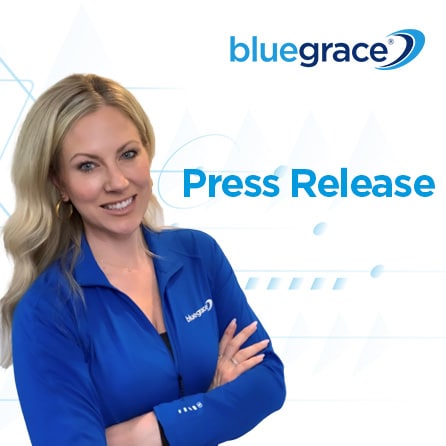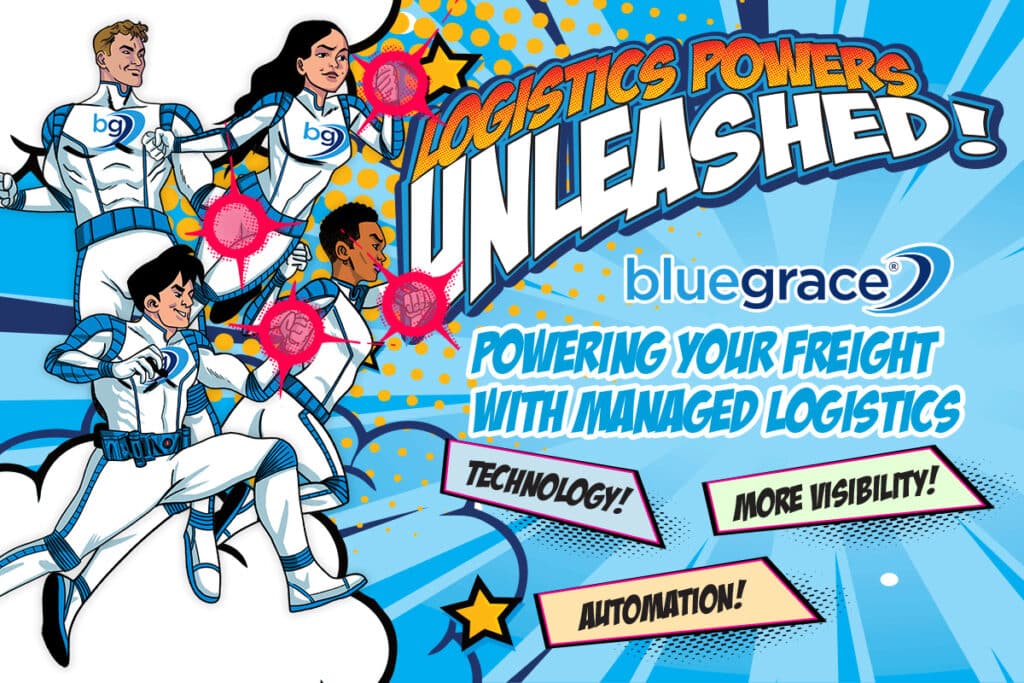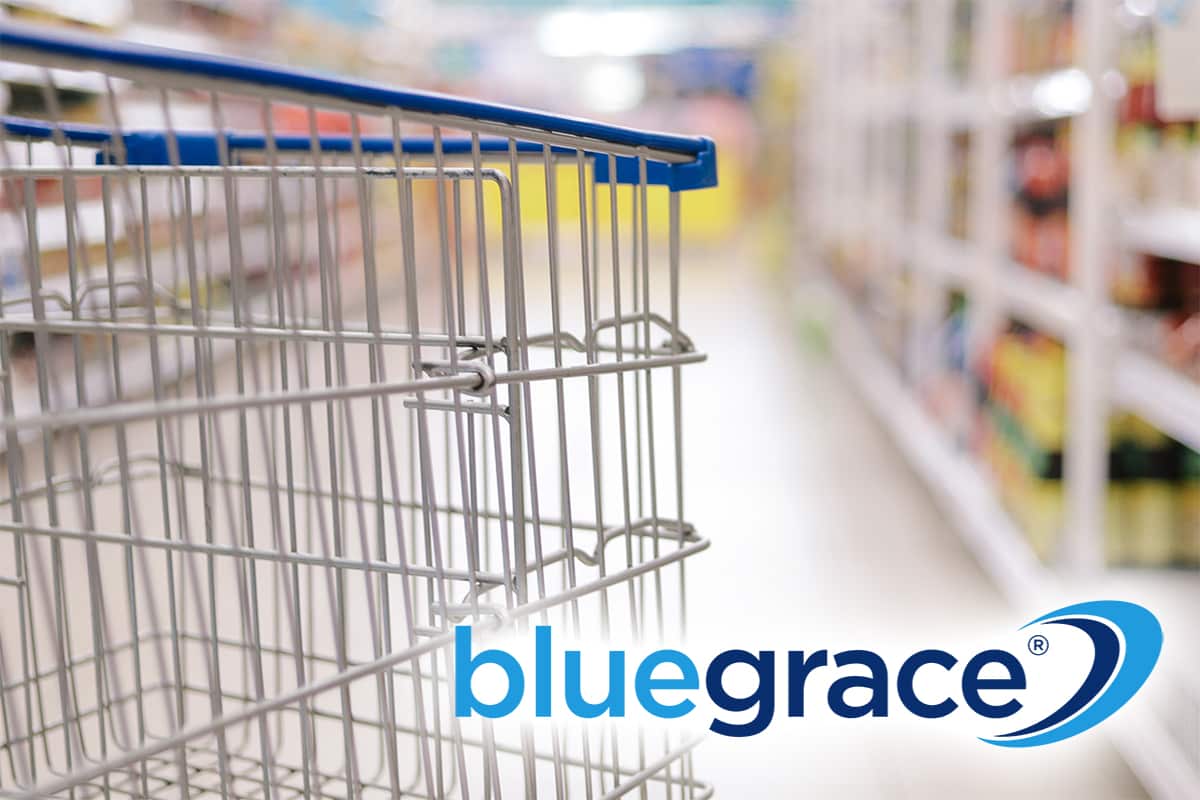
You landed the Wal-Mart account! Now what? 
An enviable position
Congratulations! You made it this far – you’re a Walmart supplier. To achieve this retail-supplier relationship, you’ve provided all your information, proven that your products are a good fit for Walmart’s customers and demonstrated that you are the sort of business Walmart wants to work with. You’ve filled in the forms, shared your certificates and completed the 11 step onboarding process.
It’s a fantastic achievement. According to Walmart, you’re now one of 100,000 businesses worldwide supplying products to its customers. That number demonstrates just how much Walmart is the “800 lb. gorilla” in the supply chain, and it’s also a mark of how highly regarded you are, as a CPG company, to have it agree to distribute your products.
We know that all your distributors, all the retailers you sell wholesale to, are important to you, but Walmart is possibly just that little bit more special. Whether you’ve just started, or have been supplying it for a few years, it’s a different business to the one we all grew up with. The pressure Walmart faces are the same as the rest of the retail sector. Its size is a double-edged sword – its footprint of stores and operations means there are more places to be affected by market disruptions, yet it has the resources to not only weather the storm, but profit from it too.
Just being big isn’t enough, however. What marks Walmart out is its commitment to innovation. In July 2019 it opens its first high-tech consolidation center — a 340,000-square-foot dock in Colton, California that will use automated technology to receive, sort and ship freight. According to the announcement, this ‘will enable three times more volume to flow throughout the center’.
Walmart innovates to maintain its position. Why does it need to do that?
The Situation Today
Walmart needs to continually innovate because it faces a very real threat.
Amazon.
Amazon has been at the forefront of the consumer shopping experience revolution. One-click payments, same-day delivery in certain geographies, multiple delivery and collection options, dash buttons – all features that are shaping customer expectations. Its dominance of the retail landscape is such that it has gone from driving 15 percent of core US personal consumption expenditure (PCE) growth in 2013 to 69 percent in 2017, according to Morgan Stanley Research.
This has forced many retailers, including Walmart, to revise how they serve customers. For Walmart, that means a switch from building stores to focusing more on e-commerce to drive growth. In September 2016, it acquired e-tailer Jet.com, accelerating its online sales and helping it to outperform the retail sector within a year. It consolidated its e-commerce position with the purchase of Indian online retailer Flipkart in 2018.
In much the same way that Amazon purchased Whole Foods to acquire physical presence, Walmart acquired Jet.com to give it a credible e-commerce function.
That does not mean that Walmart is abandoning its bricks and mortar business. Those stores mean that it is closer to more people in the US than any other retailer, with 90 percent market penetration, versus Amazon/Whole Foods’ combined 74 percent.
So, Walmart is closer to you, but Amazon can offer a great experience. This is where Walmart’s innovation switches from automation technology in vast consolidation centers to delivering efficiencies in its extended supply chain. A customer can find anything in Amazon and get it the next day. With a Walmart down the street, if a product is in stock, that same customer can walk away with it on the day.
It is here that suppliers come in. Products have to be in stock. As Steve Bratspies, the chief merchandising officer for Walmart US, told the Wall Street Journal, “When we receive the product that we ordered, we see better sales.”
In other words, if a customer can not find what they want, they will go somewhere else. Not only does the retailer lose that sale, it also loses the opportunity to sell complementary products, or perhaps something that simply catches the shopper’s eye on the way to checkout. According to Greg Foran, Walmart US CEO, five percent out of stock at Walmart’s scale translates to 5,000 orders.
So, Walmart will do everything to make sure that its shelves stay full, that customers can find what they want, when they want it. If insufficient stock is ordered, that’s a retailer issue. If insufficient stock is delivered at the right time, that’s a supplier issue.
At the same time, as Walmart and other bricks and mortar retailers look to economize, they’re looking at where they hold stock. They want stores to sell, not to act as warehouses – the price of retail square footage simply does not allow that in the current market. That’s why Walmart is introducing these consolidation centers – to collate from hundreds if not thousands of suppliers, before using their own distribution networks to get the stock to stores.
That’s the retail landscape suppliers are entering into when they become part of the Walmart supply chain. Alongside this are rising fuel and transport costs – the US Energy Information Administration (EIA) May 2019 update forecasts that regular gasoline retail prices will average $2.92 per gallon (gal), up from an average of $2.85/gal last summer.
It’s an additional cost that both suppliers delivering to Walmart and the retailer itself, through shifting products from consolidation centers all the way to stores, are going to have to take on board. This ultimately impacts margin across the supply chain.
Ramifications: they say jump, you say how high
An environment of ruthlessly seeking efficiency, with fluctuating transportation costs, dominated by 800 lb gorillas.
What that means for suppliers is that they have to deliver when Walmart wants, not when the suppliers feel like it. It’s where OTIF comes in – on the actual due date, exactly the right amount. There is no grace period, limited leeway. That’s because flexibility eats into the margin.
Struggle to comply and chargebacks kick in – currently three percent on all shipments below the threshold. Amazon, with MABD, may appear slightly more lenient, but it has a similar level of chargeback on both late and early deliveries. On top of that, purchase order (PO) and advanced ship notice (ASN) violations (such as failing to confirm a PO or not sending an ASN in good time) levy a two percent charge
It’s just got stricter, as well. From May 2019, suppliers that ship full trucks must hit a specified window 87 percent of the time, up from the previous 85 percent previous target. For less-than-truckload (LTL) shippers, the jump is that much higher – up to 70 percent in that window, from 50 percent before.
It gets trickier. Historically, suppliers were judged on how consistent deliveries were on time and how complete they were. Now, those two parts will be evaluated separately. It’s all about having data that can be fed back into a stringent evaluation process to identify further efficiency opportunities.
Then there’s the challenge of Walmart as an international operation. As you grow within Walmart, there may become opportunities to supply its Canadian subsidiaries, or even further overseas. That brings its own challenges as you will need to comply with local regulations and legislation, both in terms of your products and your business practices.
What you need to think about if you are
So far, what we’ve discussed applies to all shippers. Yet every business is different, and there will always be specifics that only certain types of suppliers need to focus on. In this section, we’ll take a brief look at three types in particular: newer CPG companies, LTL shippers and those dealing in perishables (such as fresh food).
…a newer CPG shipper
With the introduction of consolidation centers, and the end of stores holding inventory, the onus of predicting consumer demand is passed on to CPG companies. That means knowing who your end customers are, how they shop and when there might be spikes in demand, even if you do not sell direct. This is a challenge for all CPG shippers, but whereas more established brands may have the resources to store spare stock, for newer businesses that capacity may not be available. This is where really clear insights into customers, coupled with efficient internal processes and a lean supply chain of your own, come into play. Falling foul of chargebacks will quickly eat into profits, making it vital that shippers can accurately predict consumer demand.
…LTL
If you’re LTL, the positives are savings in not paying for half-empty trucks, but the drawback is less control over how the carrier gets to your distributor than if you were a full-truck shipper. The carrier may pick up your pallets, then go to another shipper for their products. It might head to a regional dock to unload your pallets to go on another truck heading somewhere else, before being cross-shipped on to a third truck with everyone else heading to Walmart. That means you have to build in additional time to your shipment planning to ensure that you comply with OTIF, which will have ramifications for your own production processes and supply chain.
…dealing in perishables
While targets may be tight for long-life or non-perishable goods, for suppliers that deal in products that have a limited shelf life, OTIF goals are even stricter. That two-day window becomes one, which puts the emphasis on the shipper to be absolutely accurate with their deliveries. All retailers that stock food and drink, particular that which needs to be kept in controlled, refrigerated environments, need it to be able to stay on the shelf for as long as possible, in order for it to be as attractive as possible to customers. Get closer to use by or best before dates, and consumers are less likely to buy, leading to last-day discounting and wastage.
The upside
It might seem like becoming a Walmart supplier is nothing but hardship and the constant threat of chargebacks. Yet it is challenging because Walmart is such a golden opportunity to get your products into the hands of millions of consumers, both in the US and further afield.
It isn’t all about the sales opportunity, however. With retailers like Walmart looking for efficiencies, it forces their suppliers to either follow suit or fall off. By aligning your own systems and processes with the demands of OTIF, you will end up a leaner, meaner machine. This means less wastage in your operations, resulting in less outgoings and more profit.
At a time when all sectors are undergoing huge disruption, this streamlining sets you up to thrive rather than simply survive. While it is demanding, the practices and processes you onboard will unlock long term gains for your business.
The question is, what do you need to consider when aligning your business with the demands of Walmart?
Top tips on being a star supplier for Walmart
Here’s what we’ve learned turns a good shipper into a great Walmart supplier from working with businesses just like yours:
- It’s all about data: Walmart wants its supply chain to be as efficient as possible, so it’s willing to share the data it has to help you shape your operations. If you don’t sell direct, getting tangible customer intelligence can be a challenge, but Walmart will share information, such as on-shelf availability and point of sale insights, more often.
- Work from the customer backward: On time doesn’t mean in-time to Walmart. If you don’t want to suffer chargebacks, you need to think about your timings from the customer backward. The customer buys your product after it’s been on the shelf X days, so how long prior to that do you need to be delivering it to the distribution or consolidation center? How long does it take to get from your warehouse to that point?
- Chargebacks hurt, so make sure it’s justified: Walmart may be huge, but it isn’t infallible. There’s a lot of automation, which means sometimes chargebacks can be applied due to mistakes in their processes rather than your failed compliance. For instance, a carrier may have delivered your shipment OTIF, but the DC did not unload that day. The only way you can contest, however, is to have full and complete records showing how you delivered OTIF against the buyer requirements. Having a trusted logistics partner that can audit your scorecard and compare it to carrier manifests is critical, and it could be the difference between receiving a chargeback or being able to challenge it successfully.
- Load planning: If you supply multiple products to Walmart, think about how they are loaded on the pallet or in the truck. It’s no good having the back half of the truck full of products for distribution centers further down the line, or shorter life products nearer the bottom of the pallet.
- Think like a Roman: The Romans crisscrossed their empire with straight lines, because that’s the most efficient way from point A to B. You want to do the same, but build in factors such as weather forecasts, traffic patterns, fuel levels, and load points. You’re looking for the most optimized route because it will save you time, which in turn saves money.
- Packaging tips: People need to know what’s in the box. That means distribution center employees, yes, but it also means customers. How will it look on the shelves? At Walmart’s Supplier Summit 2019, Foran said “packaging should be designed for impact and efficiency with large fonts that are easy to read, easy to find and bar codes which also are prominent on the packaging.”
- Cut down on travel time: Fuel and transport costs are the great unknown, tied to everything from crude production levels to the political situation in the Middle East and South America. You want to control as much as possible, so limit how far you need to move your inventory by positioning it closer to warehouse locations. If Walmart is selling your product predominantly in California, why not get as close as possible to the new consolidation center? Limit the variables and you have a more efficient machine.
- Appointment scheduling: Be aware that your mode of transport will dictate when your products can be delivered. Most LTL carriers will not allow you to pre-schedule appointments, preferring to wait until your freight has arrived at the consolidation terminal. It will then be co-loaded with other Walmart-bound deliveries, with appointments based on the trailer the carrier has allocated for that day. It’s therefore vital that you, or more likely your logistics partner, can work closely with both the carrier and scheduling system to make sure this is being done. By doing so, you will be better placed to identify exceptions, such as where the carrier cannot accommodate the delivery, to adjust OTIF without penalty. Most suppliers don’t realize this and miss the opportunity. It is important to note, however, that this must not be abused and is for exceptions only. Your lead logistics service provider is expected to have the right connections and expertise to manage it professionally.
- Speaking of carriers, reliable ones are worth their weight in gold: We hear of horror stories where carriers and shippers fall out because neither can clearly understand what the other is actually trying to achieve. The number one mistake people make is to think that being efficient equals going for the cheapest option, when it’s actually about having every part of your chain operating reliably. There are carriers that will drop prices to get business on board, but if you’re then simply more low-paying cattle, is your OTIF compliance going to be top of the carrier’s agenda? You want a good price, certainly, but you need a partner that’s aligned with your objectives more.
- The right foundations: You can’t operate a 21st-century business using 20th-century tools. To compete in today’s market needs having the right technology underpinning your operations, foundations which give you visibility and control and allow you to have sight of, and optimize, every aspect of your business.
- Embrace digital: Walmart is investing billions in its technology – that means manual processes and paper documents are disappearing. Digital tools like electronic bills of lading are becoming the norm. Do you really want to be the only shipper the trucker has a paper docket for, with the rest on his mobile device the dock or DC are simply scanning?
- Ensure everyone lives by OTIF: It’s all well and good your logistics team being held to OTIF, but when the penalties impact the rest of your business, isn’t it really a matter for everyone? It comes back to working back from the customer – the process doesn’t stop when the product leaves your dock but should carry on through to your production team. If you’ve got a lead time of two weeks to produce new stock, that’s not a just manufacturing factor, it’s a supply chain one too.
- Walmart want you to win; let it help you: Walmart run a sophisticated education network designed to support suppliers. It’s in its interests that you are operating to the best of your abilities, so make full use of the classes, academy, and tools it offers to help you do just that.
- OTIF is vital, but so is everything else: Walmart is taking huge strides in making its entire operation as sustainable as possible, which includes targets for suppliers. These are only going to get stricter, so it’s a good idea to know what they are and keep yourself aligned. There will come a point where being 100 percent OTIF compliant, with customers buying your products in droves, won’t save you if you have a huge carbon footprint and are unsustainable. That’s a lot to take in, so here’s a one-off tip:
- How to write a great OTIF action plan: Walmart lives on data, which means evidence. Write a great OTIF action plan and you will have evidence on how you will improve standards. But how do you do that if you’ve not done one before? Googling isn’t an option here – you need qualified, experienced support. Hiring the right people is one route – but they won’t come cheap, and can you justify having them on staff as a permanent employee. Another option would be to outsource to a competent third party. One which has experience of supporting suppliers to build efficient supply chains, whether they’re supplying to Walmart, Amazon or any other big box retailer. Having a supportive partner that has done this, time and time again, for all sorts of different businesses and sectors, means you get access to the right experience and support, tailored to your unique requirements
Being a Walmart Supplier – a story from the frontline
For one Houston-based health and beauty supplier, working with Walmart was a dream come true, until the tremendous growth it propelled led to distribution challenges.
With vendor scorecards dwindling and chargebacks against purchase orders mounting the need for a better solution was apparent. From numerous carrier meetings to drive on-time compliance to costly upgrades in service levels, the trend continued to show little improvement.
Lead times were not an issue and inventory levels were manageable, yet carriers could not seem to comply with the OTIF date clearly displayed on the BOL. Purchase orders were being shipped with ample lead time and in most cases early with guaranteed service at a premium. However, even with upgraded service, the carriers would typically refuse to refund the charges since they were delivered “on time” per the standard transit.
To tackle this, the supplier analyzed the data and scorecards to determine the root cause and set a baseline for current state performance. Next, an assessment of ERP integration capabilities was performed. By linking this with a transport management system, this supplier was able to apply custom business rules to achieve the missing link of the overall issue.
What this meant was that no matter when the order was received in advance of the OTIF, the supplier could effectively route the “Best Value Carrier” and provide the most optimal ship date, relative to the selected carrier’s standard transit time. Each order, once approved within the ERP, would be rated and routed with a Walmart approved carrier delivering the lowest cost, standard service and shipped on the day that would best fit that carrier’s network, all to allow for the delivery within the specified OTIF window.
The supplier showed a 90 percent reduction in chargebacks within the first 60 days of implementing this program and realized the best scorecard performance in recent history.
Now it’s time to start work
As we said before, the hard work starts now. Remember, you aren’t alone – many CPG companies experience difficulties keeping up – back in August 2017, OTIF compliance stood at 70 percent, and it’s taken a while to get higher. Walmart wants you to do well, so listen, learn and take the opportunity that awaits. Look at your own network, your own suppliers and operations, and see how they can work together to support your business with Walmart or any other big-box retailer. Technology and nuances of logistics and supply chain operations are vital here. Working with partners who have the connections, first-hand experience, and understand both the business and technology can make the difference between success and failure.
BlueGrace is a freight and logistics services provider and one of the top 3PLs (Third-party Logistics Providers) with invaluable experience in managing complex logistics programs of leading CPG companies. The dedicated team has the first-hand experience in planning, building and delivering supply chain solutions for CPG businesses that not only help them meet the requirements of their retail partners but turn their logistics from a cost to value add.
You’ve done great work getting this far. Now it’s time to do even better. Give BlueGrace a call today at 800.MY.SHIPPING or fill out the form below and see how we can help you achieve exactly that.





